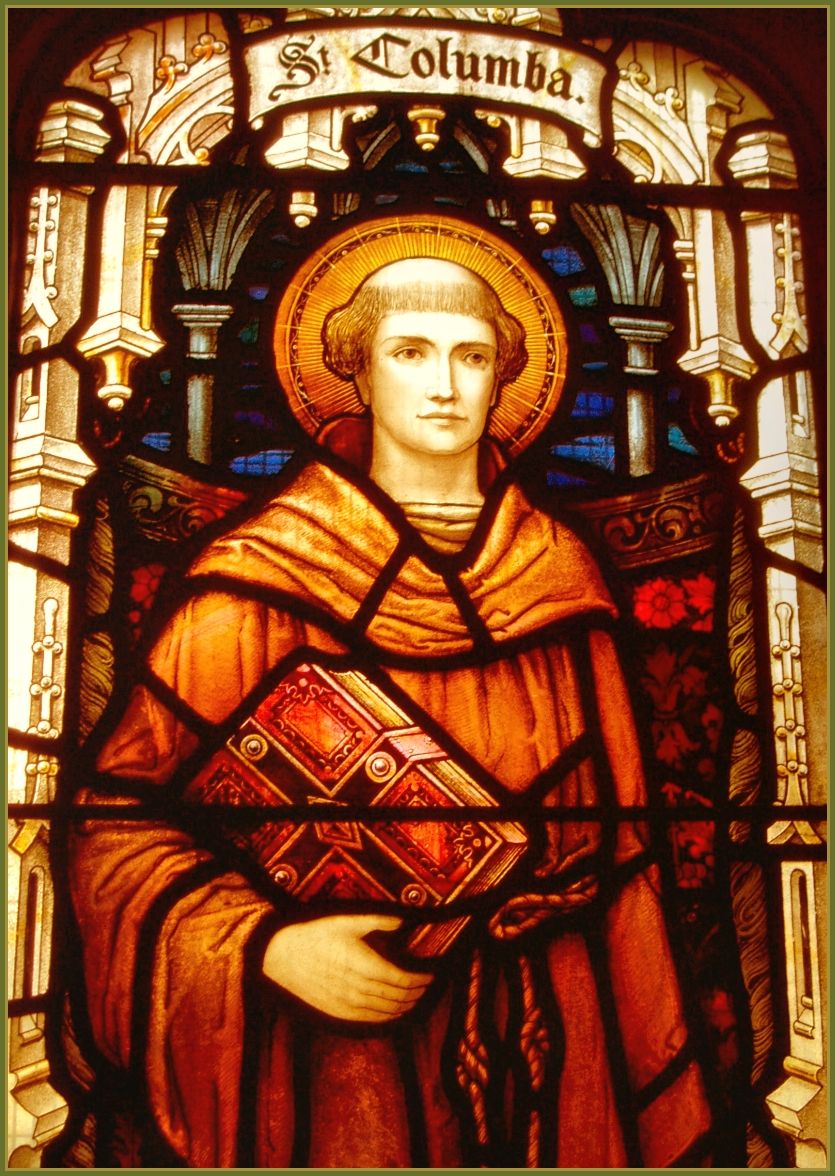Although the first written reference to Doire Colmcille does not occur until the 12th century, there are a number of references in Adamnan's Life of Columba written a century after the Saint's death, linking Doire Calgach - as Derry
was then called - with the monks of St Columba. Despite this absence of a direct link there is a lasting conviction that Columba was the founder of Derry.
The most familiar account of his life places the birth of Columba at Gartan in County Donegal on Thursday the 7th of December in the year 521. His father was Phelim McFergus, a great grandson of Niall of the Nine Hostages, and his
mother was called Eithne, from a noble family of Leinster. He was educated at Kilmacrennan and later at the Monastic School of Moville near the head of Strangford Lough. From there he passed on to Clonard where his studies were directed
by one of the major figures of the early Irish church, St Finnian.
Columba was ordained priest by Etchen, the Bishop of Clonfad, and after a short stay in the monastery of Glasnevin he returned north and in 546 he founded his first monastery in Doire Calgach (Derry). The church which he built there
came to be known as the Dubh Regles, the black church, and was long believed to have stood somewhere in the precincts of the present Long Tower Church, but modern scholarship would tend to place it further up the hill in the vicinity of
St Augustine's Church within the walls.
From Derry, Columba travelled all over Ireland and founded, or was instrumental in founding, monasteries at Durrow, Kells, Swords, Glen Colmcille, and Tory Island. Then in 563, Columba and 12 companions left Ireland and settled on the
Island of Iona, near Mull in the Hebrides, an outpost of the early Irish settlement of Dalriada in Scotland. The reason for his departure is uncertain, but the most popular explanation, and the most likely, is a combination of incidents
that led to the Battle of Cuildremhne in 561.
First Columba had copied a book of the Gospels belonging to St Finian and King Dermot had ordered him to hand the copy back. Then, Dermot had executed a young prince of Connaught who had sought refuge with Columba after a fatal fight.
Columba had taken offence and had rallied his own people, and with the help of the Connaught men, he routed King Dermot at the Battle of Cuildremhne, but the numerous deaths lost him the good will of many of his supporters, and after
wandering around the country for two years he assembled his companions and left for Iona.
On Iona he founded another monastery, and he spent the remainder of his days there, apart from two short visits to Ireland in 575 and 585, dividing his time between missionary work among the neighbouring Picts and study among the
manuscripts of his Scriptorium. He died on 9th June 597, and was buried in Iona, but precisely where, no one knows.

